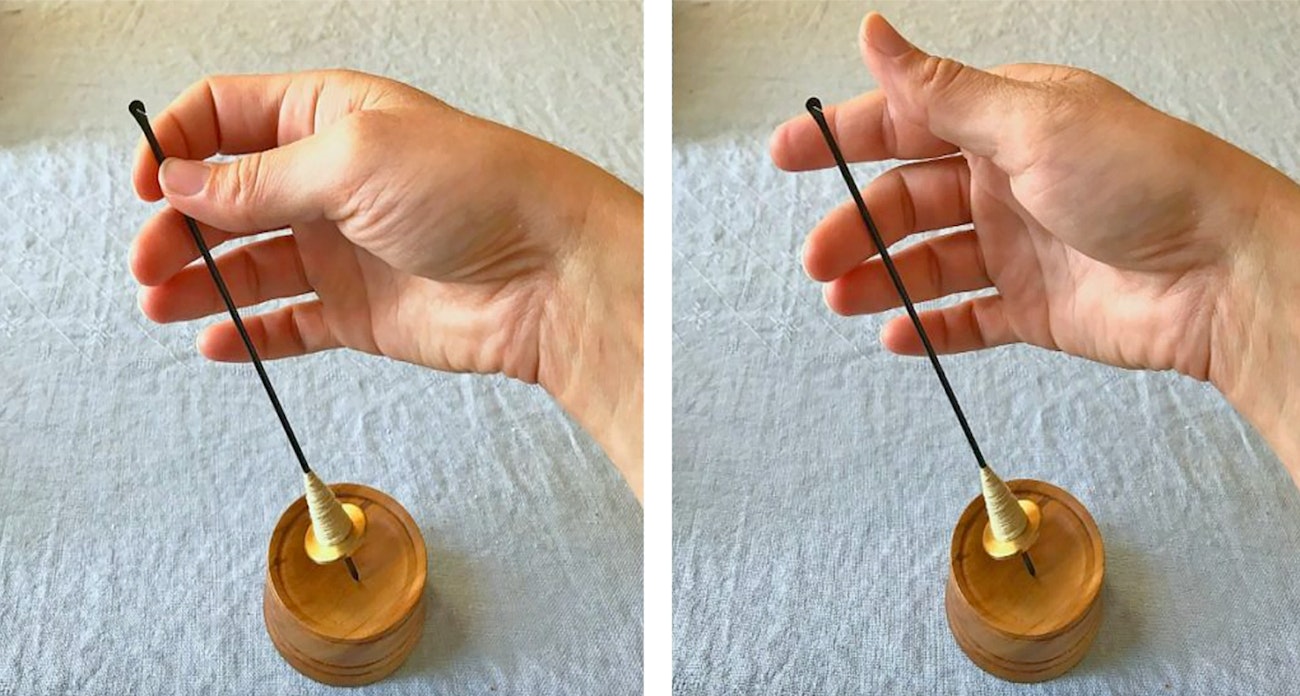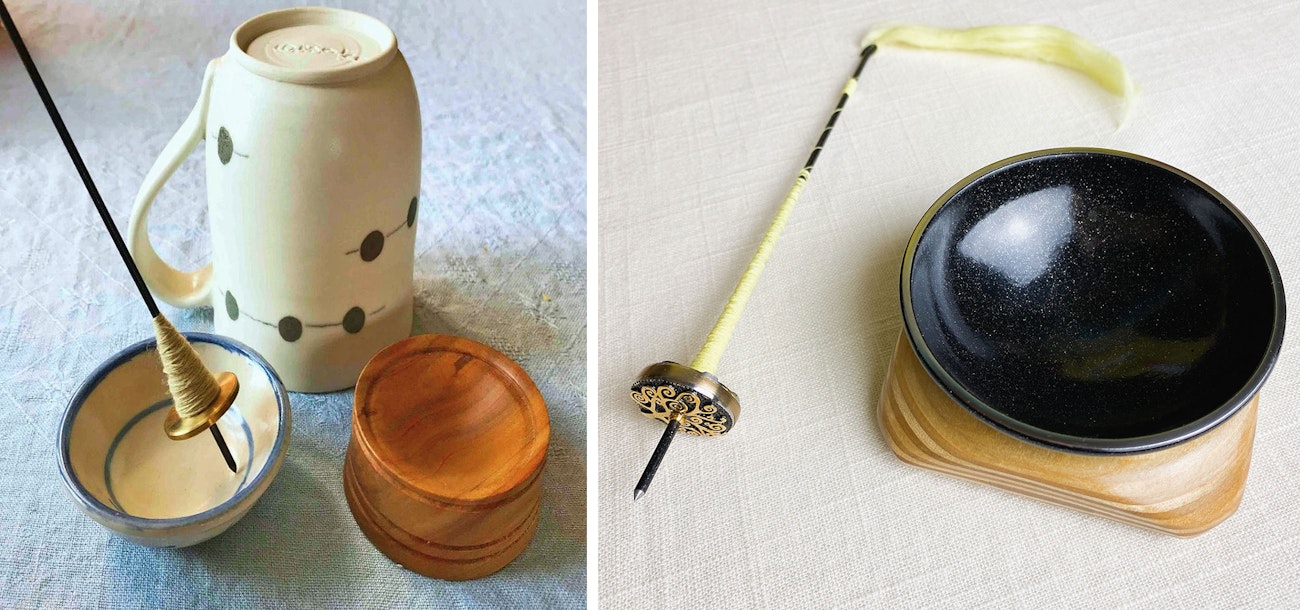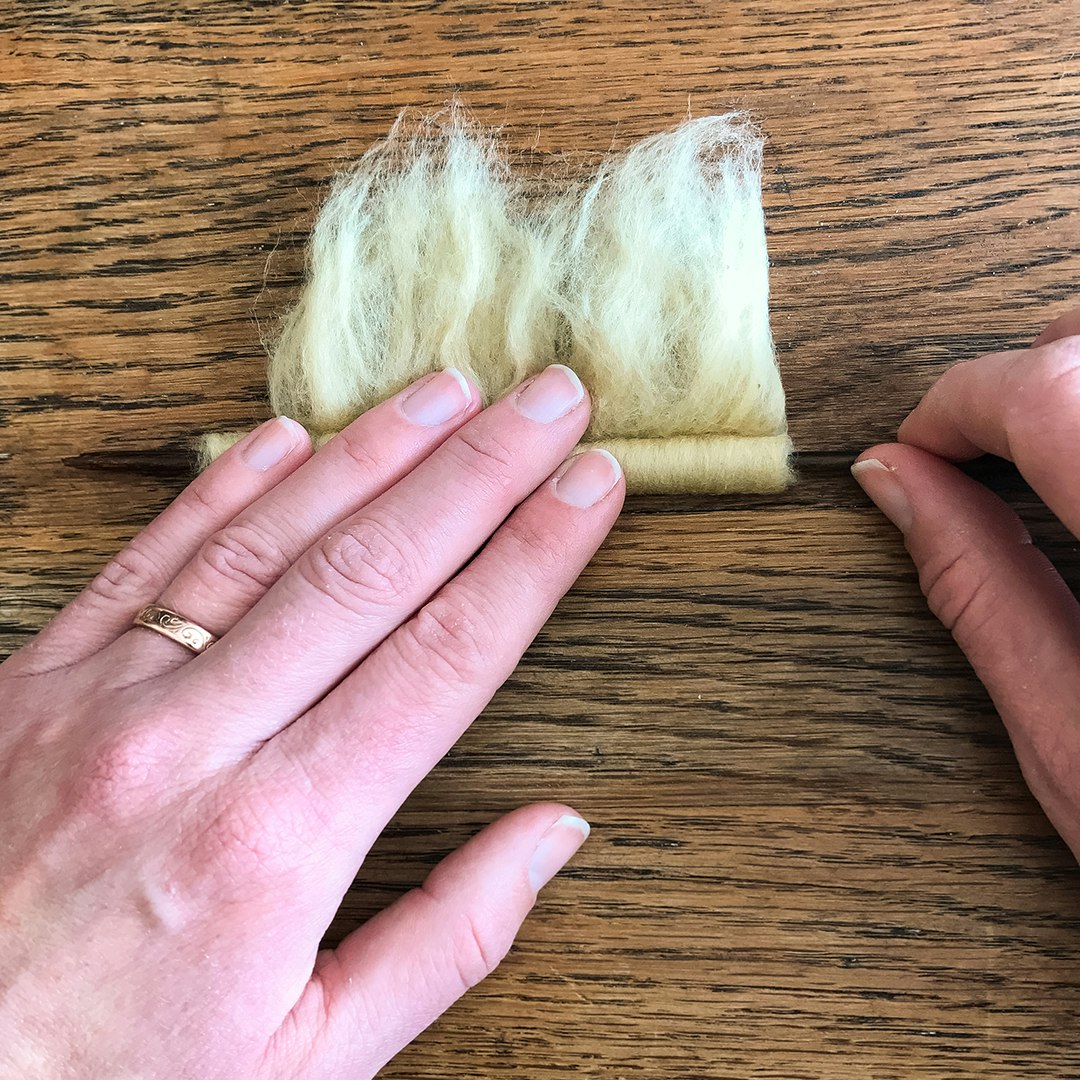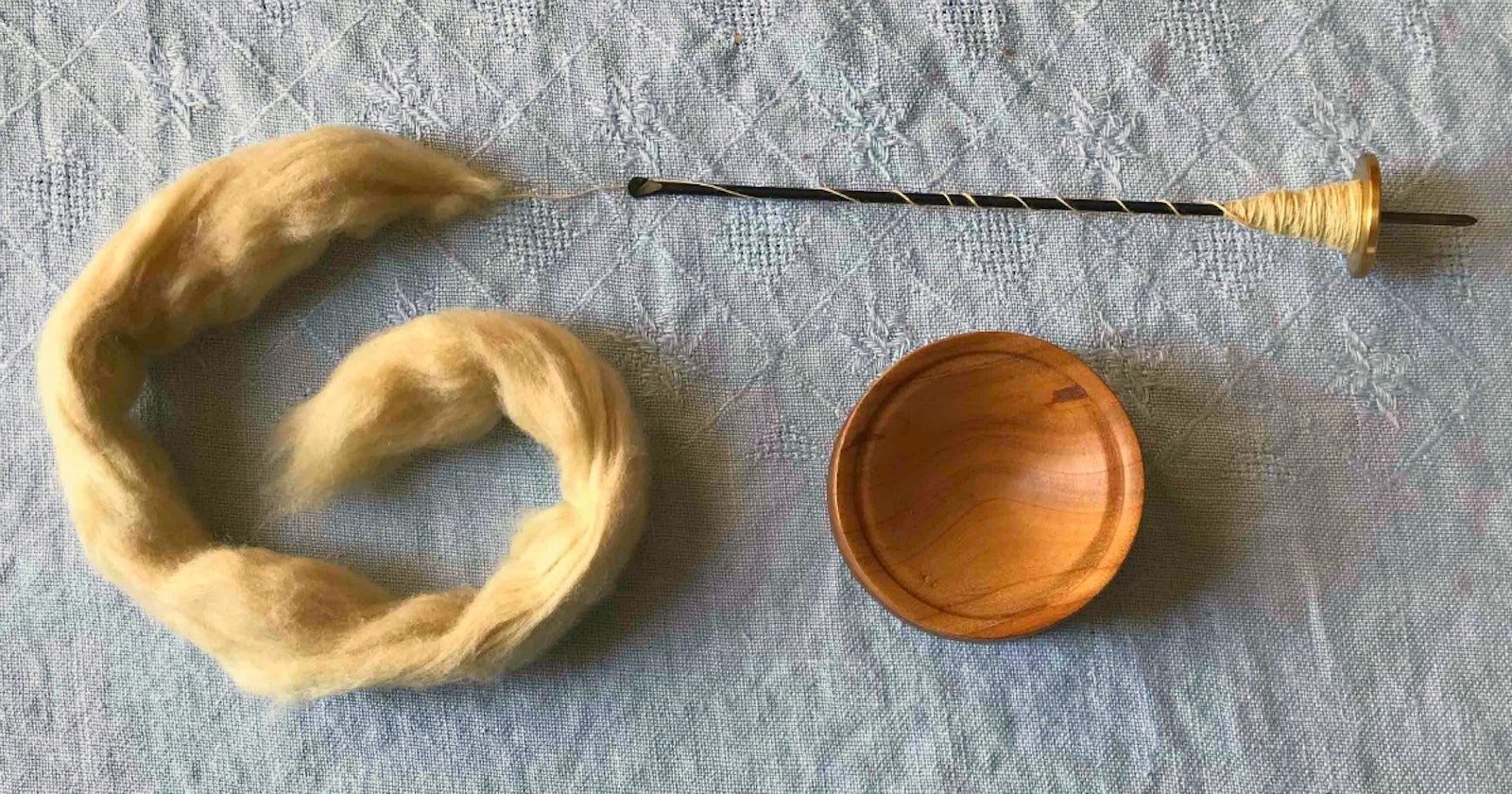Often used for spinning cotton, takli spindles can be used to spin other fibers including yak, camel, cashmere, and other luxury downs.
Learning to use a takli spindle can feel like patting your head and rubbing your tummy at first, but practice can set you on the right path. Videos such as Amelia Garripoli’s Supported Spindle Spinning can be hugely helpful.
Here are a few tips to help troubleshoot your takli spindle practice using cotton sliver.
 I like to hold my takli spindle in my right hand, flicking clockwise with my thumb and index finger. As the takli spins, it rests on my middle finger.
I like to hold my takli spindle in my right hand, flicking clockwise with my thumb and index finger. As the takli spins, it rests on my middle finger.
Challenge: It’s so awkward!
Tip: Spend some time spinning the takli spindle without fiber to find a comfortable position and wrist angle. I like to hold my spindle in my dominant right hand. My spindle leans at an angle and rests in a shallow bowl. Try flicking the tip of the spindle with your thumb and index finger in both directions. Does one direction feel more natural? I prefer to spin the takli clockwise as my thumb moves toward my heart. As the spindle spins, it rests on my middle finger. Experiment with different bowls and dishes, as they can make a big difference. When I took my first takli spindle class with Stephenie Gaustad, we used spoons!
Heavenly Bresser offers her tips for selecting a bowl that’s just right for your spindle. Read her article, “Spindle + Bowl: Finding the Perfect Pair”.
 Bowls for supported spindles can be purposefully made for the task or adapted for the job. Some spinners love the stability and height of a favorite mug! Photo at left by Kate Larson; at right, Heavenly Bresser
Bowls for supported spindles can be purposefully made for the task or adapted for the job. Some spinners love the stability and height of a favorite mug! Photo at left by Kate Larson; at right, Heavenly Bresser
Challenge: My cotton isn’t drafting.
Tip: Just like any type of spinning, the speed that the twist enters needs to be balanced with the speed that the fiber is attenuated. If you are twisting the takli like a pro but drafting slowly while you learn, twist can quickly build up and make drafting difficult. If your yarn is getting larger, has big slubs, or is hard to draft against, there are two likely culprits: you probably have too much twist, or you need to fine-tune the fiber prep. Try giving the takli spindle a slow spin, draft a few inches, and then repeat these two steps until the yarn length is a comfortable arm’s reach. Then, give the spindle a firm flick to add lots of twist.
If this doesn’t help, try spinning from the other end of the cotton sliver. One end will draft much easier than the other. You can also try changing the preparation.
 Kate has discovered that a puni preparation is easy to control and spin.
Kate has discovered that a puni preparation is easy to control and spin.
Challenge: My yarn keeps breaking.
Tip: This is probably the opposite problem as above. There isn’t enough twist for the drafting speed. Try drafting more slowly with your fiber hand and practice flicking the takli spindle faster to insert more twist. You might also be using a bowl that slows your spindle. Most takli spindles have a sharp tip that sometimes works best in a bowl that is ceramic or made of some other hard material.
With a little practice, you’ll be spinning with ease and confidence in no time!
Further resources:
- Learn more about supported spindles in the Fall 2024 issue of Spin Off.
- Supported Spindle Spinning with Amelia Garripoli
Kate Larson, editor of Spin Off, teaches handspinning around the country and spends as many hours as life allows in the barn with her beloved flock of Border Leicesters.
Originally published December 25, 2018; updated March 24, 2025.

